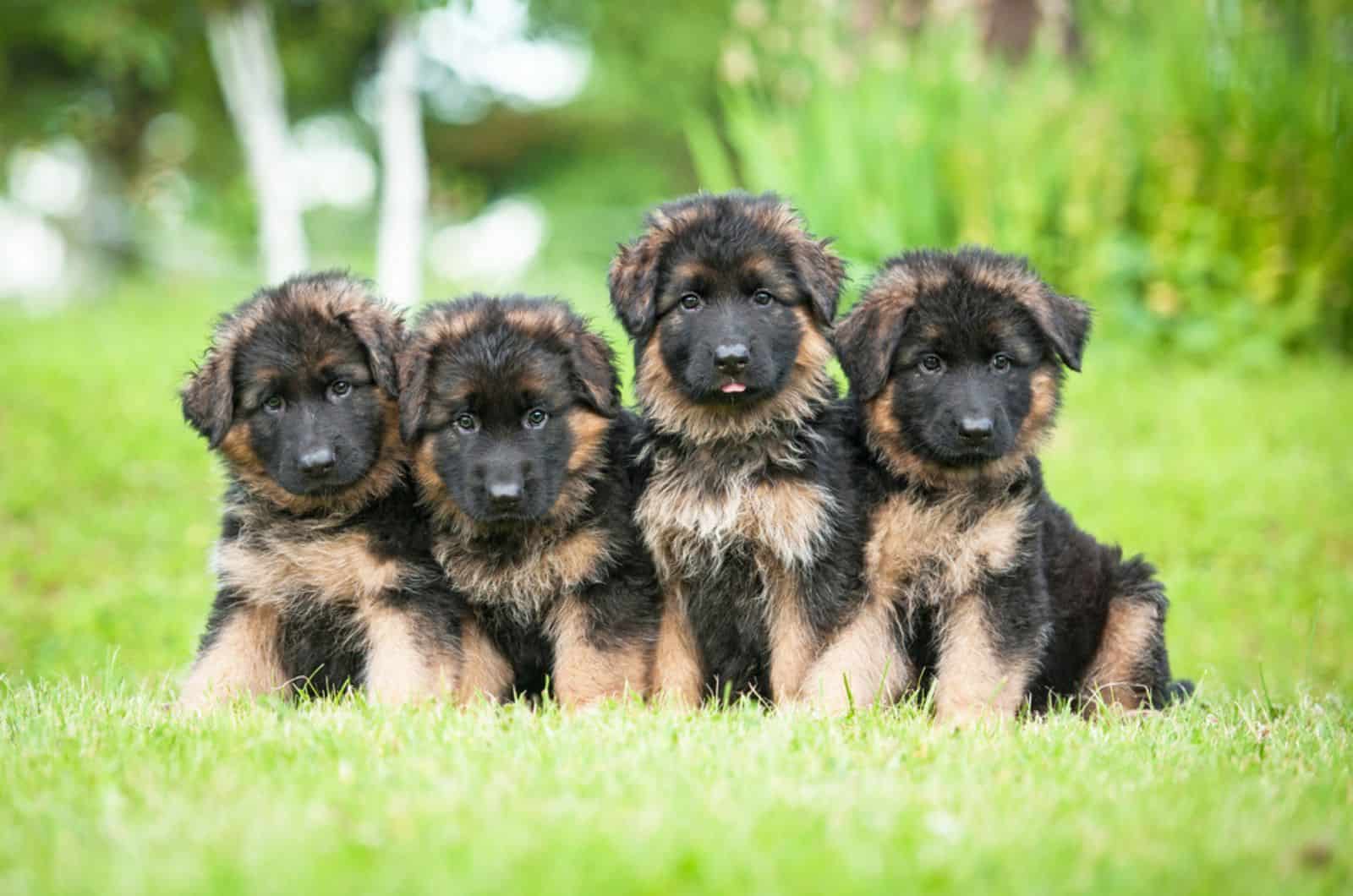These popular working dogs are known for their intelligence, loyalty, and striking coat color.
One question that many GSD owners and potential owners have is “Do German Shepherd puppies change color?” The short answer is yes, they do.
However, the answer may be more complex than just a simple “yes they do”.
Stick around because we are revealing the fun facts about different pigments and color variations of this amazing breed!
Do German Shepherd Puppies Change Color?
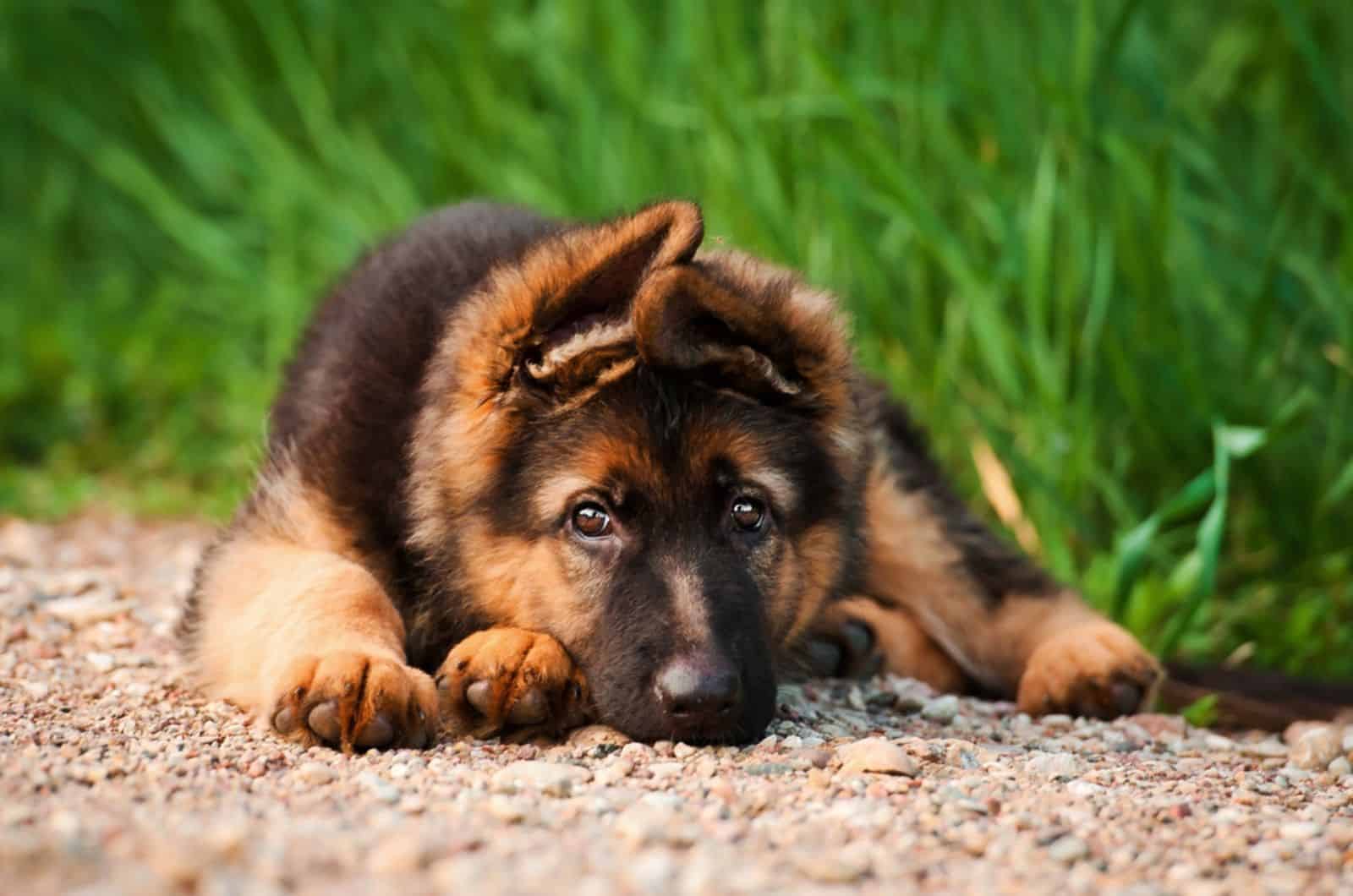
It’s like a game of dress-up, these pups change a few hues throughout puppyhood, but not like chameleons who can change into any color they want!
The color of a dog can change based on its bloodline and genetics. So, if you plan to get a purebred German Shepherd then you may want to search for reputable breeders.
Some bloodlines have a specific color pattern that may change as the dog grows, while others may develop a completely different color as they mature.
No matter if it is a long-haired or a short-haired GSD, show line or a working line, all types are prone to mild color change.
There are two colors of German Shepherds that stay the same through puppyhood and even when the dog becomes two years old. We will get there shortly!
Do German Shepherd Puppies Get Lighter Or Darker?
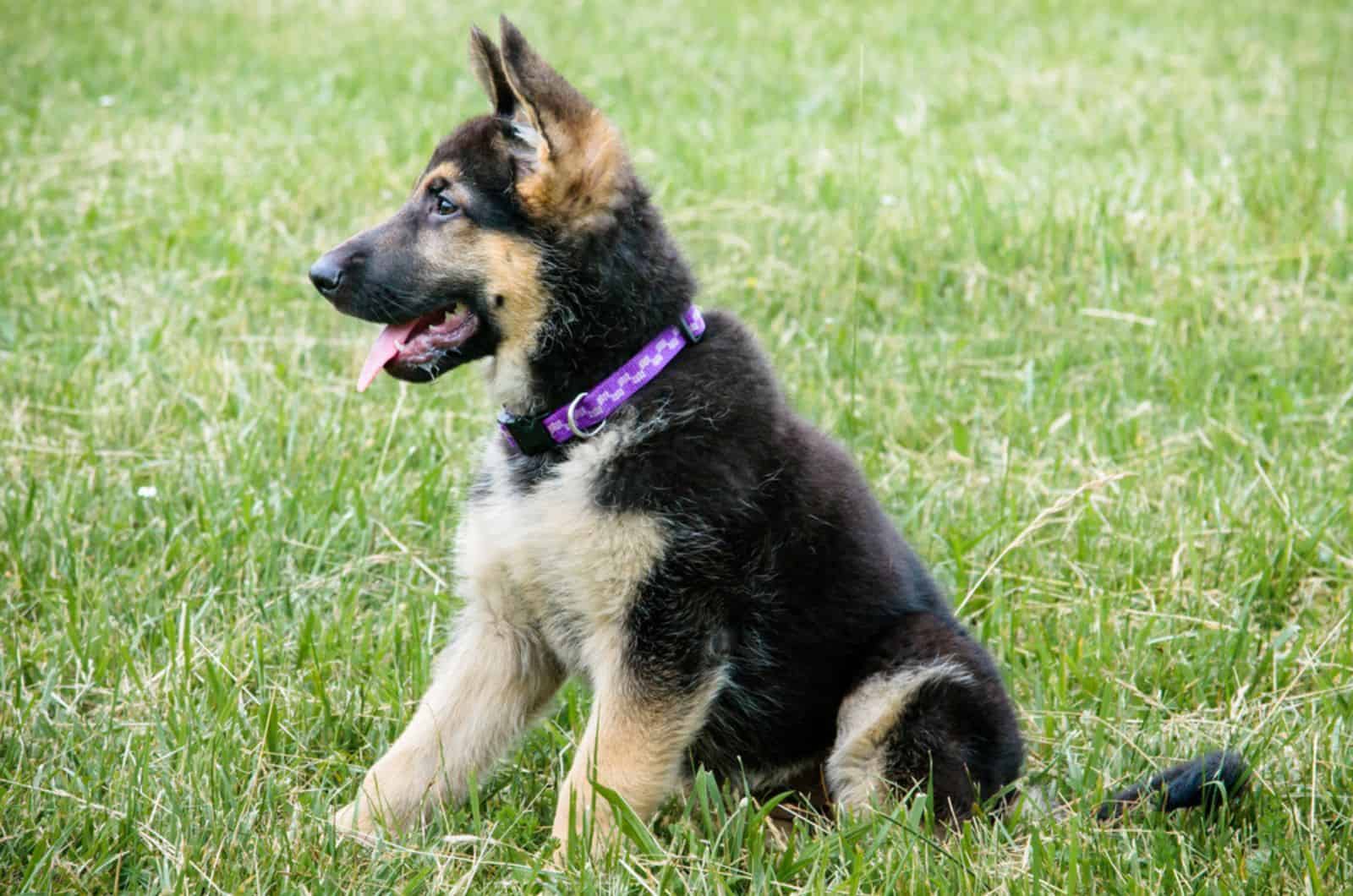
German Shepherd dogs can have a variety of coat colors, most of which change their shade throughout the first two years of life.
Some will be born with a lighter undercoat and darker outer coat, this may turn out to be an agouti pattern. This pattern is very unique and we can see it in some fluffy dog breeds like the agouti Husky.
When German Shepherd puppies are born, they have a dark fur color, typically black or dark brown. As they grow and mature, their coat color can change and lighten or darken.
An interesting fact about these color-shifting pups is that the color change can happen in different parts of their coat, for example, the ears and legs may lighten faster than the rest of the body.
This process is called “fading” or as some like to call it “blooming”.
Rest assured because this coat color change is a natural part of the development of German Shepherds and is usually not a health issue or something to be concerned about.
What Age Do German Shepherd Puppies Change Color?
The change in coat color can happen gradually over time, or it can happen more quickly. The exact timing of the change will depend on the individual German Shepherd puppy, but it usually starts between the ages of 6 to 12 months.
In some cases, baby GSDs that are 8 to 12 weeks old may experience subtle coat color change, most of which are difficult to notice immediately.
How Do You Tell If A German Shepherd Puppy Will Be All Black?
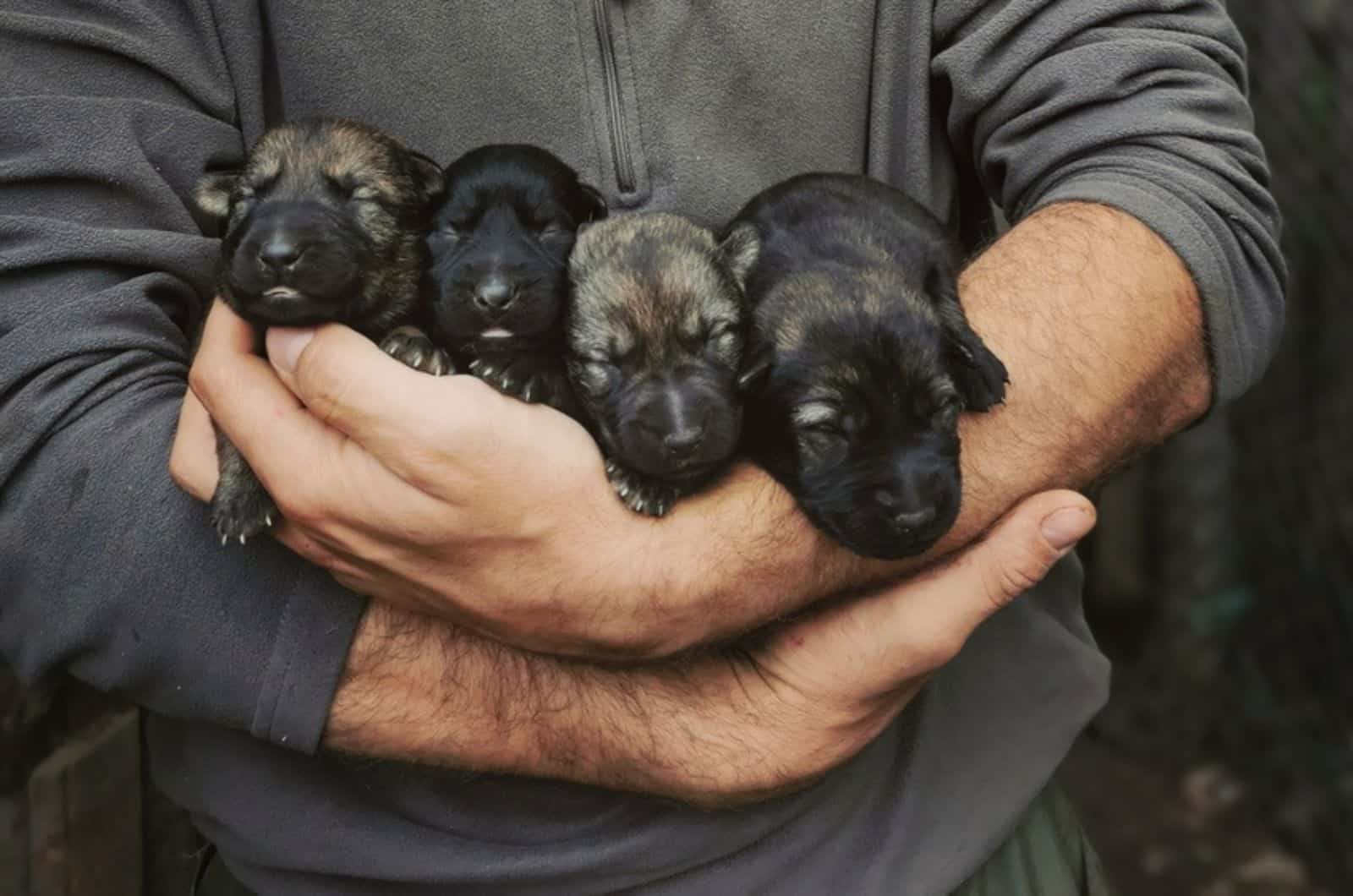
To predict if a German Shepherd puppy will inherit a solid black coat, we recommend you to observe the coat color of the puppy’s parents. If both of them have a solid black coat, chances are that the puppy will also be black.
However, it is important to note that even if both parents are black, there is still a chance that the puppy could have other coat colors like red, white, or tan color.
Even though many believe that darker colors are more dominant, you would be surprised to find out that the black coat color is, in fact, a recessive trait which makes black German Shepherds very rare. The only way to know for sure what color a puppy will be is to wait until it is fully grown at two years of age.
So, once he becomes two years old, your dog’s coat color won’t naturally change anymore.
How Can You Tell If A Puppy Will Change Color?
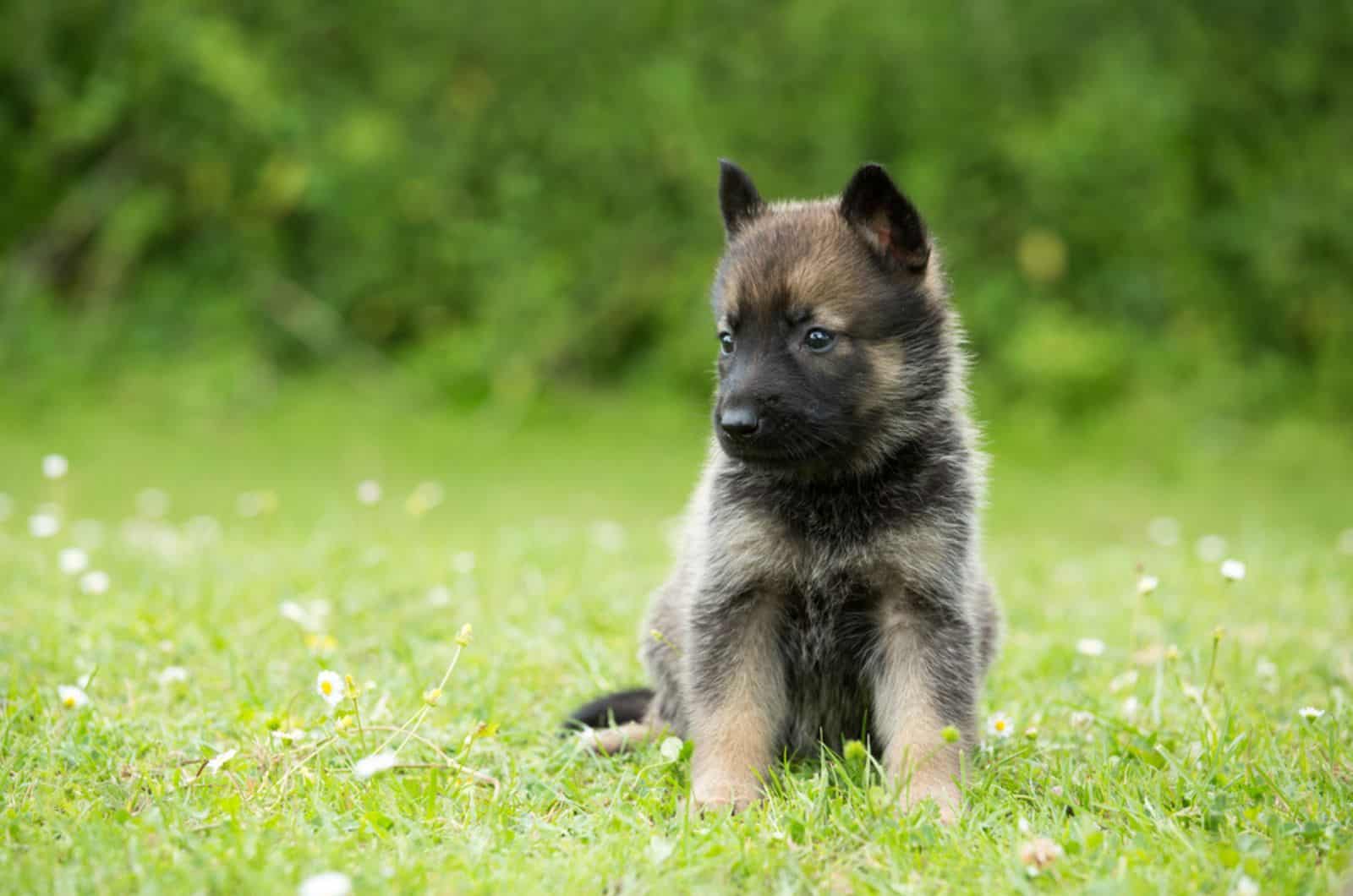
Trying to guess what color a German Shepherd puppy’s coat will turn out to be is like trying to predict the weather, it’s hard to tell! But never fear, you can always keep an eye out for some tell-tale signs to give you a clue!
Think of it like a sable German Shepherd puppy is like a caterpillar, they start off dark and fuzzy, but as they grow and mature, they turn into a beautiful butterfly, shedding their dark coat for a lighter one.
Black and tan German Shepherds may have a light saddle marking on their back when they are born, which will also darken as they grow into adult dogs.
Some of these pups are born with a lot of white hair, which may make you think that they will develop a more prominent white marking as they mature. While this may or may not happen, there is a chance that you may end up with a white German Shepherd!
On the other hand, those GSDs that are born with a lot of silver or light-colored hair, may develop a more prominent silver or light-colored marking as they mature.
When it comes to panda coat color, it may start out as white, but it will develop the characteristic bi-color markings as soon as the pup reaches eight to ten weeks of age.
If you are not sure what color your pup will be, try consulting with a veterinarian or a breeder who is familiar with the specific bloodline of the puppy.
Do German Shepherd Puppies Have Markings Like Black, Brown, And Tan Spots?
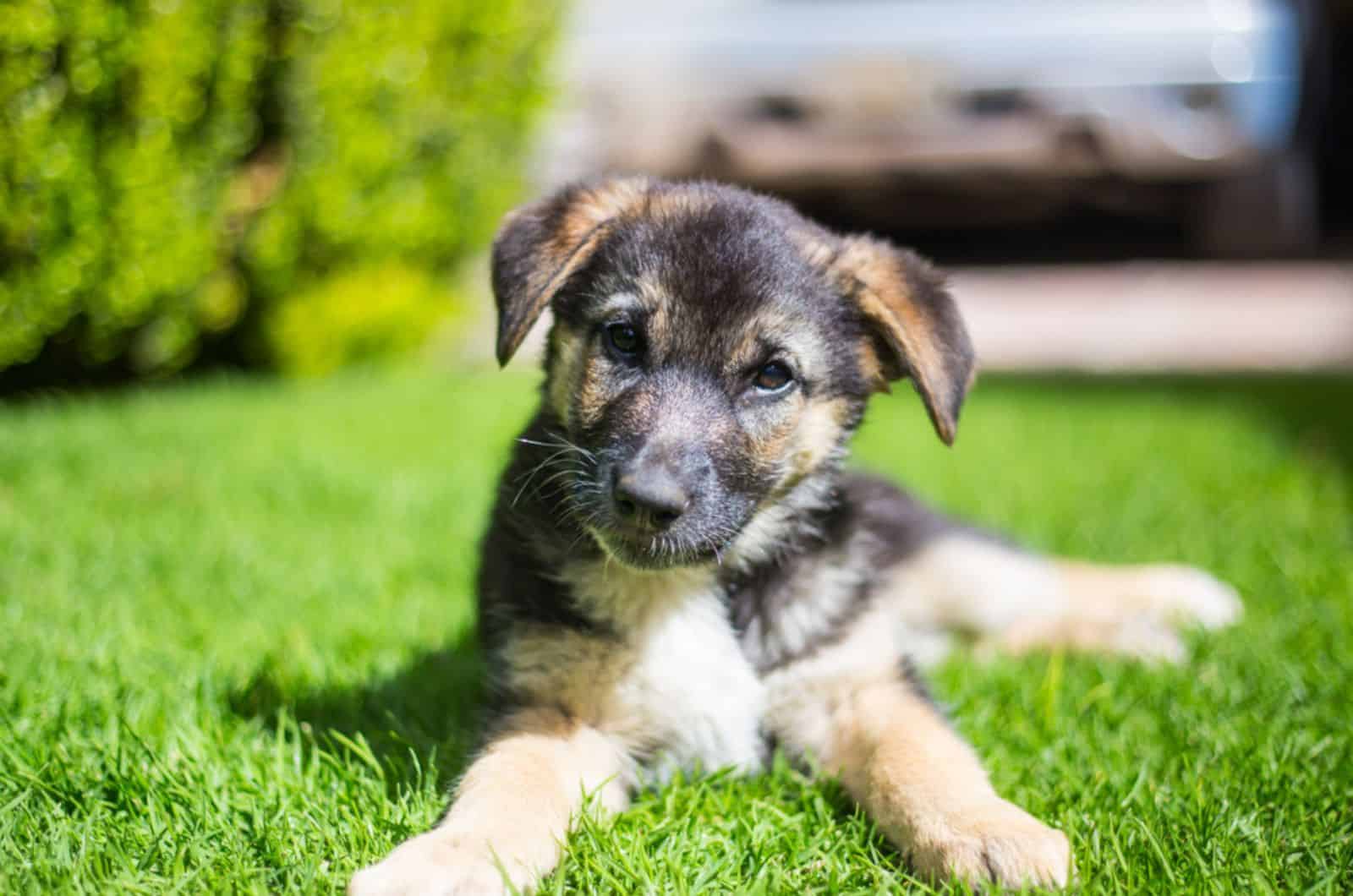
Yes they do!
Besides coat colors, German Shepherds can have a variety of coat markings and fun patterns. Note that some of them are pretty rare and may surprise you!
Ever heard of a panda coat color? This one is characterized by a white base with black or tan markings on the face, legs, and back. It is a super-rare shade that we are very fond of.
The most common coat color for German Shepherds is characterized by a black coat and tan markings on the legs, chest, and face. However, their tan spots are not the same as we see in Rottweiler coats. These spots and patterns are spread in a different manner and may be more prominent than those we see in other breeds.
As for black and white, these are solid coat colors that are rare for this dog breed. Besides that, blue colored GSDs with liver coat pattern may be even more rare as it is caused by recessive genes and genetic mutation.
Lastly, we have the saddleback coat marking that is characterized by a black “saddle” on the back, with the rest of the coat being tan or silver.
Is A German Shepherd Puppy Black And Tan Or Black And Red?
While most GSDs are black and tan, they can also show different shades of reddish to orange coat color. Again, this depends on the breeding practice, genetics, and bloodline.
Sable coat color and markings that are characterized by a mix of black, tan, and silver or gray hairs, giving the coat a “sandy” or “agouti” appearance.
Some may turn into a rich and luscious sable, or even a fiery red, but the most classic and common color is always the black and tan combo.
It’s worth noting that the official German Shepherd American Kennel Club (AKC) breed standard only accepts:
- Black
- Black and tan
- Black and silver
- Black and cream
- Black and red
- Sable
- Bi-color
So, if you plan to hit the show ring with your pup, it’s important to stick to the breed standards to avoid disqualification.
What Color Do German Shepherd Puppies Usually Turn Out To Be?
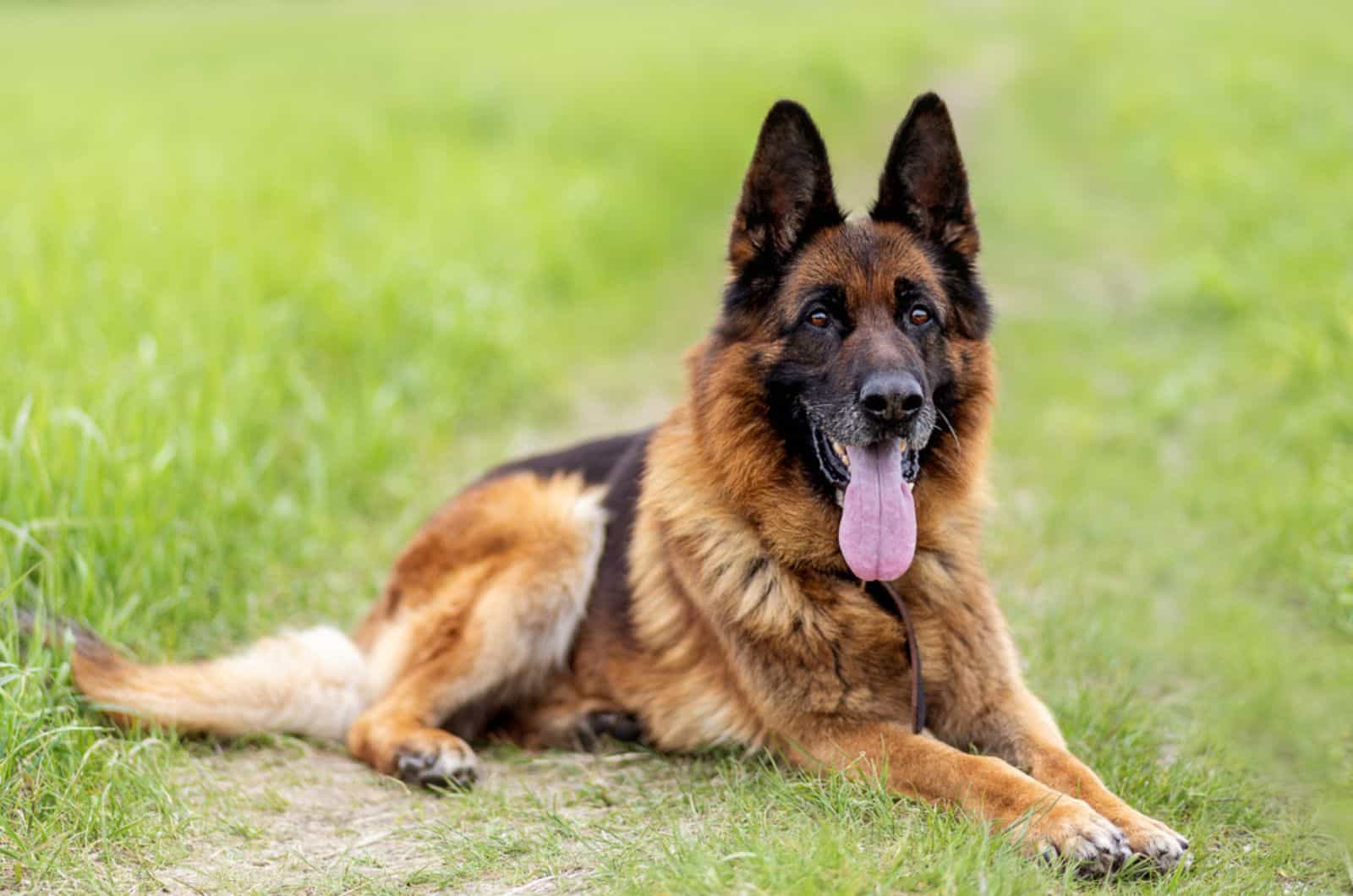
German Shepherd puppies may start off as cute little black and tan or black and silver furballs, but as they grow and mature, they turn into dark and majestic adult dogs, with coats that are significantly darker than before.
Some GSDs may also develop a reddish or sable coat as they mature. It is also possible for them to inherit a completely black coat, all white, or even blue or liver coat.
The final coat color can vary, it can be a lighter or a darker shade of the original color or a completely different color. In addition to coat colors, GSDs inherit some of the most beautiful eye colors that also become darker as they age.
Can German Shepherds Change Color Due To Health Issues?
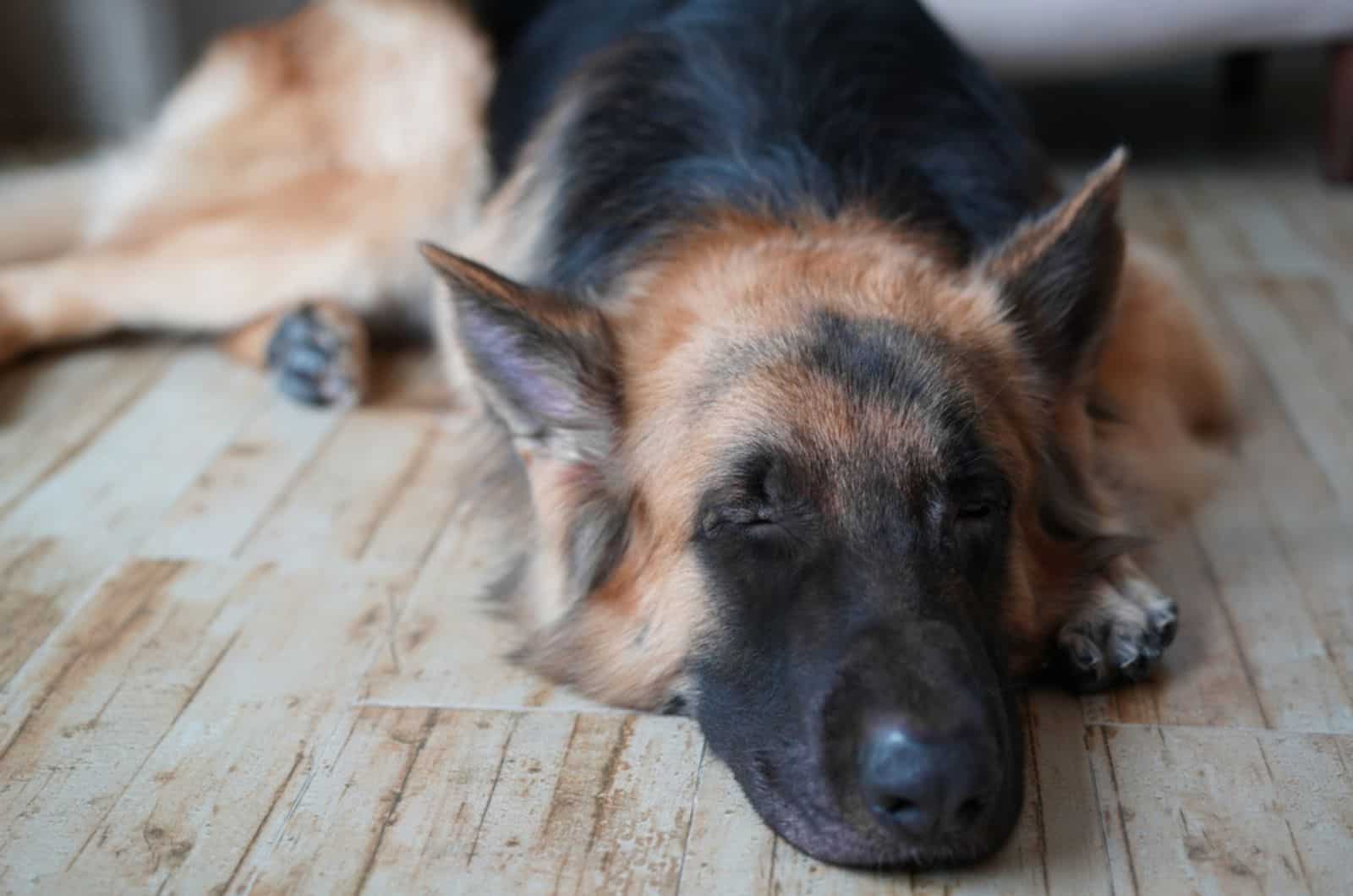
While health issues won’t change the German Shepherd coat color completely, certain skin conditions such as Demodectic mange, hormonal imbalances, or certain medication may cause changes in coat consistency and thickness.
You may notice that your itchy GSD is restless and losing big chunks of hair while it scratches itself endlessly. Fleas and mites may be the issue.
Subtle color change may also appear due to dull hairs or hair loss.
Color Dilution Alopecia
The Color Dilution Alopecia (CDA) disorder is hereditary for the German Shepherd dog breed and causes the coat to be lighter in color and can also cause hair loss. It is very different from the natural fading/blooming process that occurs during puppyhood.
This is especially noticeable in GSDs with long coats.
That said, it is important to consult with a veterinarian if you notice any signs of hair loss or discoloration in your pupper.
Final Thoughts
German Shepherd puppies do change color as they grow and mature. This process is natural and not something to be concerned about. However, if you notice hair loss, skin bumps and pustules, itchy or dry skin, you should contact your vet.
The final adult coat color can vary and can be a lighter or darker shade of the original color or a completely different color.
It’s like a game of roulette, you never know what the outcome will be, similarly, the color of a German Shepherd puppy’s coat may change as they grow up, but it’s impossible to predict the exact outcome!
So, the best possible way to determine if a puppy will change color is to look at its parents and their color patterns, as well as to observe all color changes as he grows and ask the reputable breeder for more info.
Read Next: Are German Shepherds Color Blind? Eye You Kidding Me Human?
